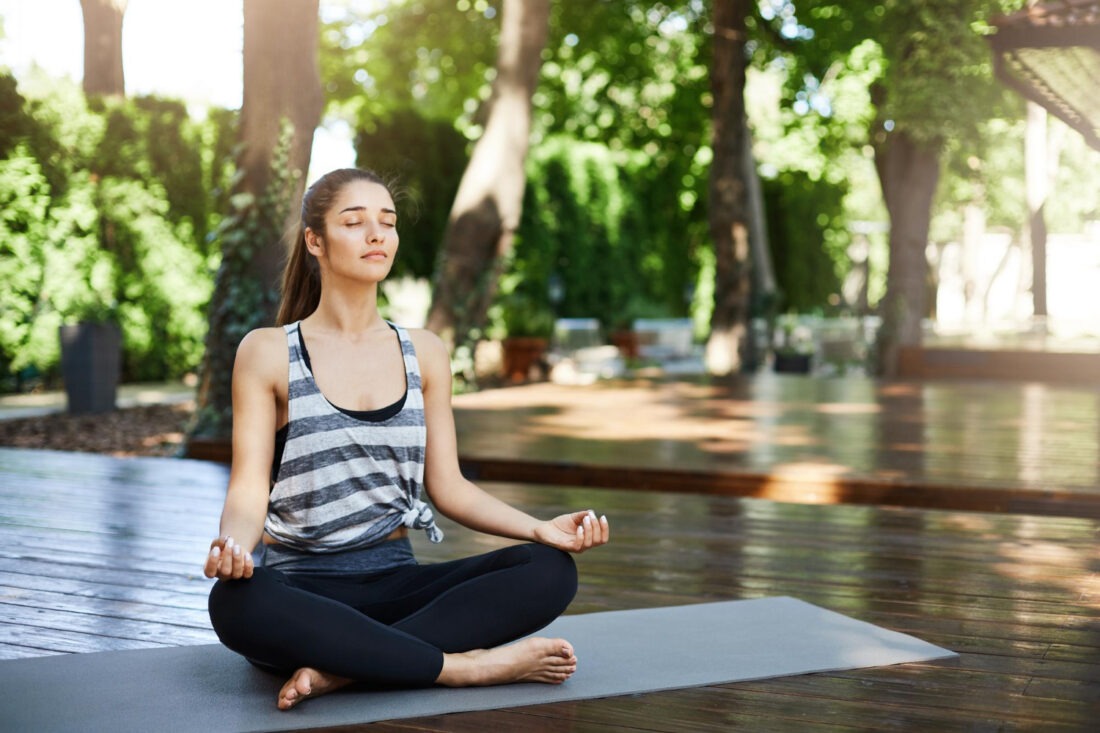
Lungs are the vital organ of the human body. The lungs allow for the exchange of oxygen and carbon dioxide, which is essential for our normal body function. Now, because of the constant exposure to dust, pollution, and increasing age, the lungs work less efficiently. Now, people with certain health conditions, such as Chronic Obstructive Pulmonary Disease(COPD) and Asthma, may experience restricted lung capacity. Fear not, Breathing is considered a great tool to help increase your lung capacity. In this article, I’ve mentioned top breathing habits to help increase lung capacity.
Benefits of Lung Training
People overlook the importance of proper breathing and lung training. No one seems to be aware that lung training often comes with many benefits. Through consistent breathing exercises, aerobic activity, using tools for better breath control and mindful habits, you can train your lungs to hold more oxygen and allow for easier breathing. There are fitness tools that help with breathwork like Omhale breathing trainer that improves breathing efficiency and promotes healthy lungs. With consistent use, it demonstrates how to improve breathing through lung training with daily practice. There are many benefits of lung training and I’ve mentioned a few below:
Stronger respiratory muscles: Exercises strengthen your arms and legs, similarly, practicing targeted breathing exercises can strengthen your lungs, diaphragm, and intercostal muscles. This improves your breathing efficiency and supports you during periods of stress or intense physical activity. Many people are now using a breathing trainer to improve overall respiratory health, lung capacity and easier breathing.
Increased lung capacity and efficiency: Lung training often expands the total volume of air your lungs can hold; this leads to helping you take in more oxygen with each breath. This also means that your body becomes more efficient at oxygen intake and removing unwanted carbon dioxide. This improves your energy, overall stamina, and physical health.
Improved Posture and Chest Expansion: Lung training often involves exercises that promote good posture and chest expansion, giving your lungs spacious room to inflate fully. This helps people who spend long hours working at desk jobs or have sedentary lifestyles.
Enhanced Relaxation and Stress Reduction: Practicing controlled breathing and deep inhaling activates the parasympathetic nervous system, which calms your body and mind. It not only reduces anxiety and stress but also helps lower blood pressure and heart rate
6 Habits to Increase Lung Capacity
Here are six simple daily habits that I suggest to everyone to help improve their overall lung capacity and enhance both their physical and mental well-being.
Pursed Lip Breathing
This is a simple exercise that slows your breathing and keeps your airways open longer, allowing more air to flow in and out of your lungs. This method reduces the work of breathing and improves the exchange of oxygen and carbon dioxide. It is often helpful during heavy physical activity or when you feel overwhelmed by stressful moments. Some people find it especially beneficial to focus on timing, for example, by breathing in for 5 seconds and breathing out for 10 seconds. I suggest you keep a clock nearby, so that you can keep count. This exercise also benefits people who do little physical activity and may not be exercising their breathing muscles properly.
How to do it:
- You need to inhale slowly through your nose for two seconds.
- Try to purse your lips as if you’re about to whistle.
- Now, you can exhale gently and slowly through pursed lips for four seconds (twice as long as your inhale).
- Try repeating these steps for several rounds, especially when you feel short of breath.
Interval Training
If you ever experience shortness of breath or breathlessness during training, interval training can help you increase your lung capacity. Interval training involves alternating between short periods of strenuous and less strenuous exercise. For example, you could try walking at a very fast pace for 1 minute, then walking more slowly for 2 minutes, repeating this cycle several times to pace your breathing. You can also perform strength training activities for 1 minute, such as bicep curls or lunges, and then walk at a gentle pace for 2-3 minutes. Interval training gives the lungs time to recover before challenging them again, helping to increase overall lung capacity and stamina. You can also try intervals of cycling, swimming, or bodyweight exercises. That brings us to the next habit you should practice often.
Incorporate Aerobic Exercise
If you practice regular aerobic activity, like brisk walking, cycling, swimming, or dancing, it can automatically force your lungs to work harder. In this way, over time, you can increase your capacity and efficiency. The science behind this is simple: aerobic exercise increases your heart rate and breathing rate, training your lungs to take in more oxygen and expel more carbon dioxide. But remember, consistency in good daily exercise improves both lung and cardiovascular health.
Aim for at least 20–30 minutes of moderate-intensity aerobic exercise most days of the week. Try engaging in activities like jogging, swimming, or even a fast-paced walk, which can make a big difference in your breathing.
Practice Deep Belly Breathing
Belly breathing is another effective way to increase your lung capacity and expand your diaphragm. I suggest belly breathing to my friends, family, and well-wishers. Belly breathing encourages you to inhale air deep into your lungs, especially the muscles beneath your lungs will be able to get a full oxygen supply. This will automatically expel stale air and maximise oxygen intake. Try practicing the following steps to help you get a better understanding on belly breathing or diaphramatic breathing.
- You can rest a hand or a lightweight object on the stomach.
- You need to breathe in slowly through the nose and note how far the stomach rises.
- Breathe out through the mouth.
- You need to breathe in through the nose, this time trying to get the stomach to rise higher than it did with the previous breath.
- Try to exhale, and try to make each exhalation two or three times as long as each inhalation.
- Periodically, roll the shoulders forward and backward and move the head from side to side to ensure that the exercise is not contributing to tension in the upper body.
Focus on good posture and chest expansion
Many people often ignore the fact that good posture leads to good breathing. Our lungs are soft and very flexible, so the space you give them matters. If you’re one of the people who slouches for no reasons, it can compress your lungs and result in less effective breathing. You need to focus on practicing good posture and chest-expanding stretches to help your lungs fully inflate. Here are the steps to keep in mind:
- Sit or stand tall, roll your shoulders back, and lift your chest.
- Try a simple stretch: Like standing with feet hip-width apart, inhale and raise your arms overhead, hold for a few seconds, then exhale and lower your arms. Repeat this step several times.
- You can also lean back slightly in a stable chair and take a few deep breaths, feeling your chest open up.
Alternate nostril breathing
This is an ancient yoga technique, this practice easily jelp you inhale through one nostril, while closing the other and then switch and repeat. But try to do this slowly and smoothly while staying aware of your breath.
- Sit comfortably and place your left hand on your knee.
- Now, lift your right hand to your nose, exhale, and close your right nostril with your thumb.
- Try inhaling through your left nostril and then closing it with your fingers.
- Release the right nostril and exhale, then inhale through the right nostril and close it.
- Exhale through the left nostril.
- Repeat this cycle for up to 5 minutes and end by exhaling through the left nostril.
Final Thoughts
People think that improving lung capacity requires drastic changes. But to be honest, it only takes a few mindful habits practiced consistently. You can easily practice daily breathing exercises and incorporate certain yoga poses to expand lung capacity and strengthen respiratory muscles. Hydration also helps keep the mucosal lining in your lungs thin, making it easier for them to function. I also suggest you laugh often! Laughter is another easy technique to expand your lungs and abdominal muscles. Start with one or two of these habits and gradually build a routine. The more you use and expand your lungs, the better and healthier you will be!



